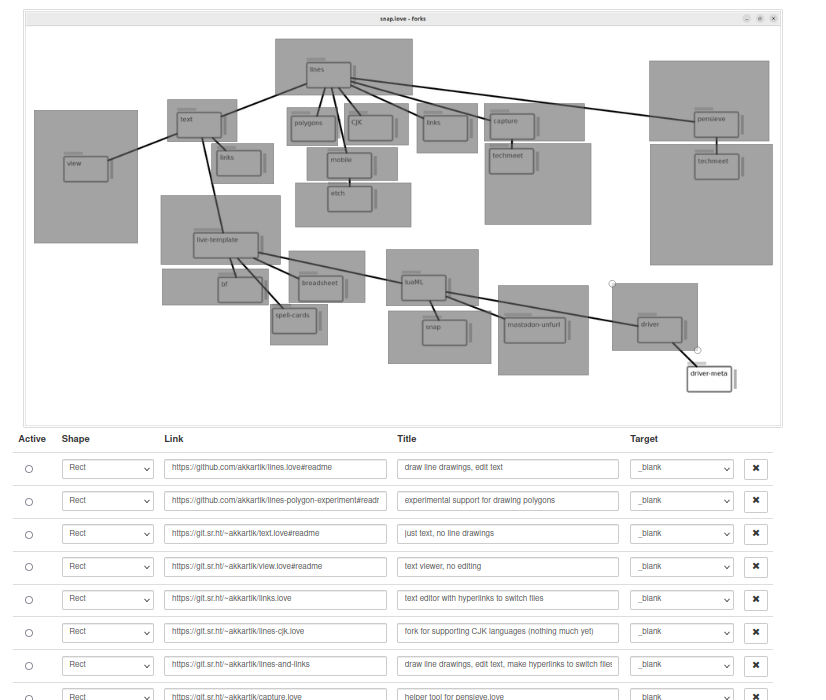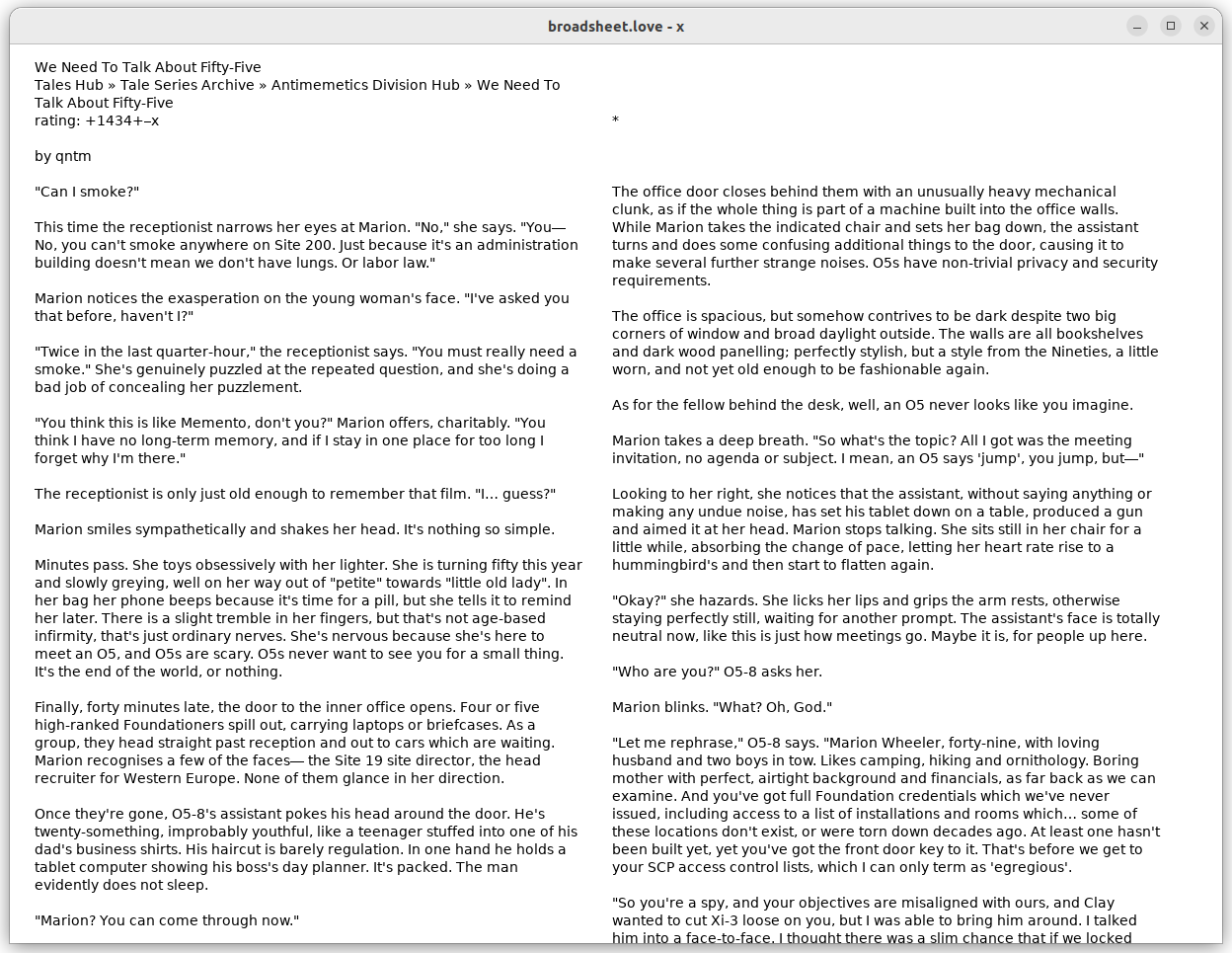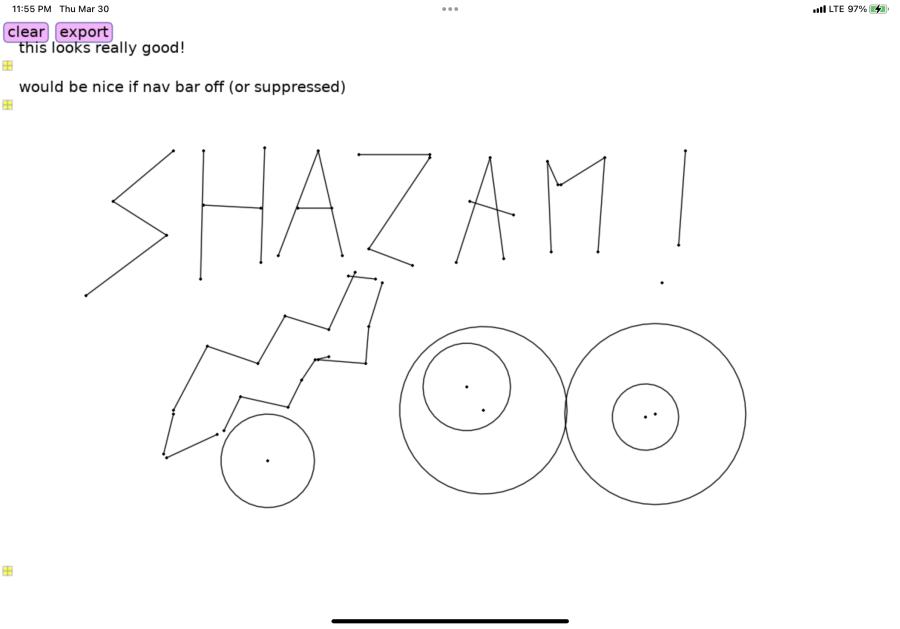Hopefully there's no discernable difference from the outside :crossed_fingers:
'-'.
Today's head-scratcher:
> ('00-43'):match('^(%d%d)-(%d%d)')
00 43
> ('00-43'):match('^%d%d-(%d%d)')
nil
I should just always escape it ('%-') as a matter of course.
My Freewheeling Apps kinda abuse git, and I've been watching for problems to arise from this friction.
Most software tries to keep branches short-lived. Merging is the point of a branch. My apps are long-lived forks that never merge, only occasionally cherry-pick.
Today I noticed a pattern: a file has been deleted in a fork and reintroduced in a later fork. Changes to it won't make it over that chasm without manual help.
How big is this problem? I wrote a quick and dirty visualizer which highlights chasms as the black lines. The short lines are false positives, so it's not a big problem. Yet.
How I built this:
- topologically sort my forks (columns) so parents come before descendants, children stay close to parents
- hash files in each fork so filenames show up in the same row
- zoom my terminal way out
- highlight long runs of spaces

After I posted my talk yesterday, Konrad Hinsen suggested appending a list of links to all the forks I mentioned. Searching around, I found a neat service called image-map.net which made my image of forks clickable with relatively low effort.
The only drawback: link coordinates are not normalized. So if you resize your the links all break.



Once more at this. This time after seeing Hexagony.
One problem I have with Befunge (not the one you're thinking of, ha) and other fungeoids is that you have a bunch of static information about a program visible in 2D on screen, but a key piece -- the stack -- is invisible. The question I keep returning to is how one might go about making the stack (or any other run-time state used by the program) visible without just bolting it on on the side. This time around, I got hooked on the following metaphor. Imagine a spaceship that contains some data, sets out on a voyage across an infinite 2D plane, and performs various operations depending on the objects it collides with.
Example 1: The space ship contains a row of boxes. Colliding with a number pushes a box on to the nose, colliding with an operator operates on the 1 or 2 front-most boxes in the front. This is a way to display a stack, but a stack in isolation doesn't seem to scale well to larger programs.
Example 2: The spaceship contains a number. Colliding with the BF-inspired primitives + and - causes the number to be incremented and decremented, respectively. Now build addition out of it. Zooming into a number n shows it to be a loop of n iterations. When the spaceship collides with n it loops through n times, and the number inside it has n added to it. At a high zoom, you see the spaceship loop n times before exiting the "solar system". At a low zoom you see the spaceship exit instantaneously with n added to its value. Now you can imagine a reduce operation as a series of solar systems that the spaceship visits one by one.
Example 3: The spaceship contains a binary heap to insert and delete elements from depending on objects it collides with. Zooming into any single collision reveals the tree structure to be the "space" that a smaller spaceship containing a single number bounces among.
Two properties that seem important from these examples:
- A hierarchical nature where space and spaceship are duals, and zooming in and out causes them to turn into each other.
- Rendering the state of a spaceship needs to be extensible (like in my old Pong demo). We need to leave Befunge's ASCII behind.
At the largest scale, state machines feel like a really powerful way to represent the state within a spaceship. I often find them to be the outermost architecture of a large program. But to actually find the state machine I have to flail around for a long time. If we could use some visual paradigm at the largest scales but zoom into text as needed, programs might be much more comprehensible.
In a bare-bones template repo (~500 LoC).
In a more elaborate template with testable primitives and an editor widget.
Open it on a browser tab when you clone and start editing using driver.love. There are a few examples in the Readme to spark ideas. Works on any Windows and Unix.
-
* `clear` the buffer. I imagine this like clearing an Etch-a-sketch.
* `export` the buffer to html. I imagine it emerging out of the app like a Polaroid.
He sent me this screenshot from his iPad <3
